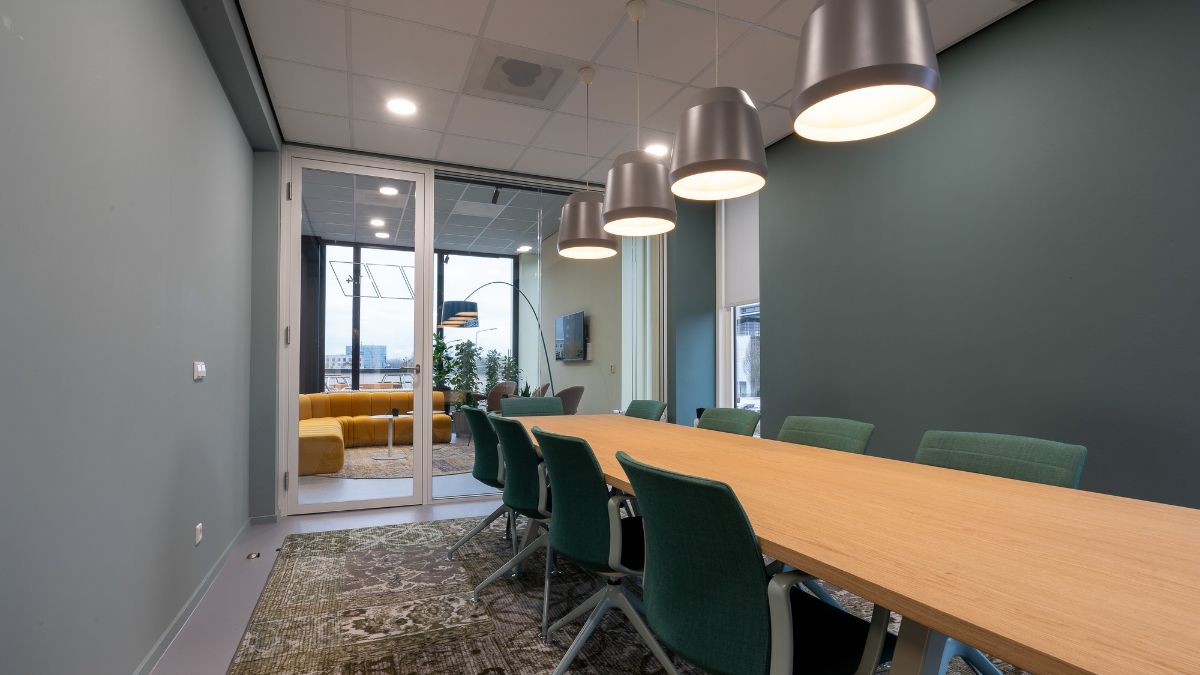
As we spend a significant portion of our lives in the workplace, it’s crucial to create an environment that is conducive to productivity, focus, and well-being. While factors like ergonomic furniture and proper ventilation play a role, one element that often goes overlooked is lighting. The right light bulbs can have a transformative effect on your workspace, enhancing both functionality and aesthetics. In this blog post, we’ll explore the different types of light bulbs, factors to consider when choosing them, and how they can positively impact your productivity and well-being.
Understanding Different Types of Light Bulbs
Understanding the different types of light bulbs is essential when it comes to choosing the right ones for your workspace. Incandescent bulbs, although traditional, are not energy-efficient and have a shorter lifespan compared to other options. Compact fluorescent bulbs offer better energy efficiency and last longer but emit a cooler, bluish light. LED bulbs, on the other hand, are highly energy-efficient, long-lasting, versatile, and come in a range of color temperatures. LED bulbs have become increasingly popular in workspaces due to their many benefits. By understanding the features and benefits of each type, you can make an informed decision that suits your workspace’s specific lighting needs.
Factors to Consider When Choosing Light Bulbs for Your Workspace
When selecting light bulbs for your workspace, it’s essential to consider the following factors:
Brightness Level
The brightness of your workspace lighting should be appropriate for the tasks at hand. Too dim, and you risk straining your eyes; too bright, and you may experience discomfort and glare. Aim for a balance that provides sufficient illumination without causing visual fatigue. When it comes to brightness levels, UFO LED lights are known for their exceptional luminosity and high output. These lights are designed specifically for high-ceiling spaces like warehouses, factories, and industrial settings. These lights have various brightness levels, with lumens ranging from 15,000 to 28,000 and wattages varying from 100W to 200W. These high-lumen outputs ensure adequate illumination in large areas, providing optimum visibility for tasks and activities. The brightness of UFO LED lights can be further customized through dimming capabilities, allowing users to adjust the brightness level according to their specific needs.
Color Temperature
Color temperature refers to the warmth or coolness of light. A neutral or cool white light (around 4000-5000 Kelvin) is recommended for office lighting as it promotes alertness and concentration. However, warmer lights (2700-3000 Kelvin) can create a more relaxed ambiance in certain areas like break rooms or collaborative spaces.
Energy Efficiency
Opting for energy-efficient light bulbs not only reduces electricity consumption but also saves you money in the long run. LED bulbs are renowned for their exceptional energy efficiency, consuming significantly less power than traditional incandescent bulbs.
Lifespan
Considering the lifespan of light bulbs is crucial, especially in commercial settings. LEDs can last up to 50,000 hours, significantly outperforming incandescent and compact fluorescent bulbs. This longevity reduces maintenance costs and the frequency of bulb replacements.
Compatibility with Fixtures
Ensure that the light bulbs you choose are compatible with your workspace fixtures. Different bulbs have varying base types, such as screw-in or pin-based, so it’s essential to match the bulbs to the appropriate sockets.
Creating the Ideal Lighting Design for Your Workspace
Creating the ideal lighting design for your workspace is crucial for promoting productivity, well-being, and overall comfort. When designing your lighting scheme, consider incorporating a combination of task lighting, ambient lighting, and accent lighting. Task lighting, such as adjustable desk lamps, provides focused illumination for specific work activities. Ambient lighting, achieved through overhead fixtures or indirect lighting, creates a pleasant overall brightness in the space. Accent lighting, like spotlights or decorative fixtures, adds visual interest and highlights certain areas or objects. Additionally, pay attention to factors such as brightness level, color temperature, energy efficiency, lifespan, and compatibility with fixtures when choosing light bulbs. Opt for energy-efficient options like LED bulbs, which offer versatility and long-lasting performance.
Enhancing Productivity and Well-being with the Right Light Bulbs
The impact of lighting on productivity and well-being cannot be overstated. Properly lit workspaces have been shown to improve mood, focus, and overall job satisfaction. Here’s how the right light bulbs can contribute to these positive outcomes:
Promoting Alertness and Focus
Cool white light, such as that emitted by LED bulbs, stimulates alertness and enhances cognitive performance. It helps combat drowsiness and keeps employees engaged and focused throughout the day.
Reducing Eye Strain and Fatigue
Proper lighting reduces eye strain, which can lead to headaches, blurred vision, and discomfort. Bright, even lighting with reduced glare minimizes eye fatigue, allowing for increased comfort and improved productivity.
In conclusion, don’t underestimate the impact of lighting on your workspace. Invest in high-quality, energy-efficient light bulbs like LEDs, considering factors such as brightness, color temperature, energy efficiency, lifespan, and compatibility with fixtures. Incorporate different types of lighting, including task lighting, ambient lighting, and accent lighting, to create an optimal lighting design. By doing so, you’ll create a workspace that not only looks visually appealing but also enhances productivity and well-being for everyone who works there.




